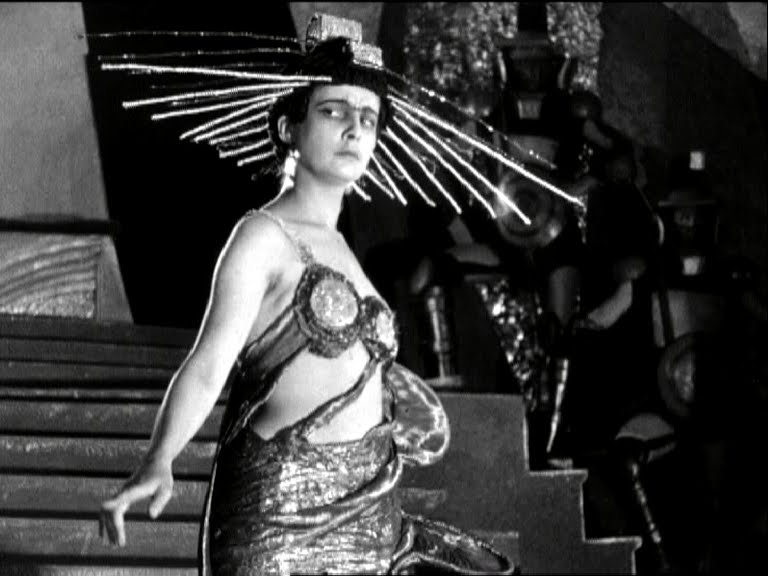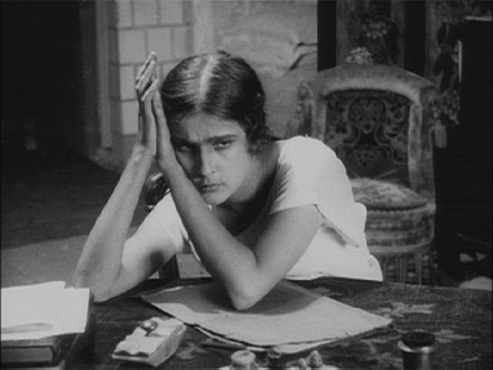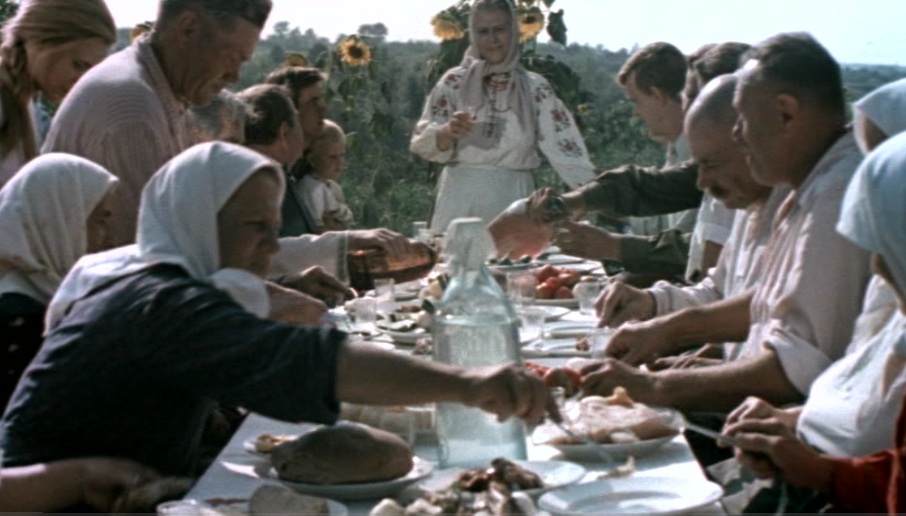In the late 1940s, Alexander Dovzhenko, the great Soviet film director of such classics as Earth (1930) and Ivan (1932), wrote in his diary: “I often think how my life has been wasted.” This pessimism, unlike the unbounded optimism of his films, derived from his having directed only seven major features in twenty years due to bureaucratic interference from Stalin’s minions. Thus, much of his time was spent writing screenplays for imaginary films. Then came Khrushchev’s famous speech at the 20th Party Congress, in which he denounced the personality cult and other aspects of Stalinism. The speech had a liberalizing effect on Soviet cinema, and Dovzhenko, who had been planning a Ukrainian trilogy for many years, finally saw it becoming a reality. But the night before he was to start shooting his first film for nearly a decade, Poem of the Sea, he died of a heart attack aged sixty-two in 1956. End of tragic story. . . .
However, like an allegorical hero of one of his films, Dovzhenko was miraculously reincarnated in the body of his widow Yulia Solntseva. Working from detailed scripts, she was able to fulfill her husband’s dreams of bringing them to the screen. “If Dovzhenko had lived, I would never have become a director; all that I do I consider as defense and illustration of Dovzhenko,” Solntseva proclaimed. Yet, despite this modesty, Solntseva, who died aged eighty-eight in 1989, was an artist in her own right.
When the twenty-seven-year-old Solntseva met the thirty-four-year-old Dovzhenko in 1928, before co-directing a number of his films, she was already a well-known film star having made her screen debut in Yakov Protazanov‘s Aelita: Queen of Mars (1924). The Soviet cinema’s first venture into science fiction is a delightful didactic comedy in which Solntseva, her eyes kohl-rimmed and wearing bizarre Constructivist costumes, made an immediate impression as a cruel ruler of an autocratic society, set up in contrast to the new Soviet model. In the same year, she appeared in The Cigarette Girl from Moscow, an endearing romantic comedy, in which Solntseva in the title role has three suitors vying for her attention. Her last film performance was as the tragic peasant hero’s defiant sister in Dovzhenko’s Earth, one of the supreme masterpieces of Soviet cinema.
After her husband’s death, Solntseva shot The Ukrainian Trilogy, an amalgam of illusion and reality, legend and Ukrainian nationalism, in Sovcolor, 70mm and stereophonic sound. This approximated to the way Dovzhenko had seen them in his mind’s eye. “I have enjoyed planning my future work for the panoramic screen,” he wrote. “In 1930, I saw such a giant screen in Paris and it made a profound impression on me. The long horizontal shape suits the elements in my next film: broad steppes, stretching waters of a sea, airplanes, the idea of great spaces.”
Poem of the Sea (1958), which tells of the construction of an artificial sea, necessitating the flooding of a village, is remarkable for its confidence, grandeur and glowing beauty. The Flaming Years, a series of fluid, imaginative and affecting images, which focus on the wartime odyssey of a gallant Ukrainian soldier who survives the war to return to his brave schoolteacher sweetheart, won the Best Director award at Cannes in 1962. The Trilogy concludes with The Enchanted Desna (1964), which depicts the Ukraine of Dovzhenko’s youth: an indelible image of a rural paradise. (For what it’s worth, it is one of Godard’s favorite films.)
There is further proof of Solntseva’s supreme mastery of the wide screen in The Unforgettable (1967) in which there is never a dead space, never a camera movement that doesn’t make dramatic sense, whether depicting a poignant, almost heraldic love scene, a fight between two men on either side of a barbed wire fence, or hundreds of soldiers marching like matchstick men into the distance.
Although there is nothing more calculated to scare western audiences away from certain East European films than to mention that their subjects are collectivization or the Soviet Five Year Plan, it does Solntseva’s films a disservice to ignore the ideology that informed and inspired them. These passionate, patriotic panegyrics to the life, culture and history of the Ukraine, are no more idealistic visions of the Soviet Union than John Ford’s westerns are of the USA.
Solntseva’s films, based on her husband’s screenplays written some years before, hark back to an ideology and aesthetic out of key with the more realistic post-“thaw” pictures represented by Kalatozov’s The Cranes Are Flying (1957) and Chukhrai’s Ballad of a Soldier (1959). But within the restrictions of a Utopian philosophy, there is plenty of scope for humour and humanist values, and the pantheism of How High Are the Mountains (1974) is irresistible—a girl pirouetting in the rain, beautiful blonde children walking barefoot over the ploughed earth, listening to the grass and bathing in a pure stream. (How heartrending to realize that Chernobyl has made this now impossible!)
Solntseva’s fulfillment of Dovzhenko’s dreams is one of the most compelling and courageous in the history of cinema, a partnership that transcended death.







